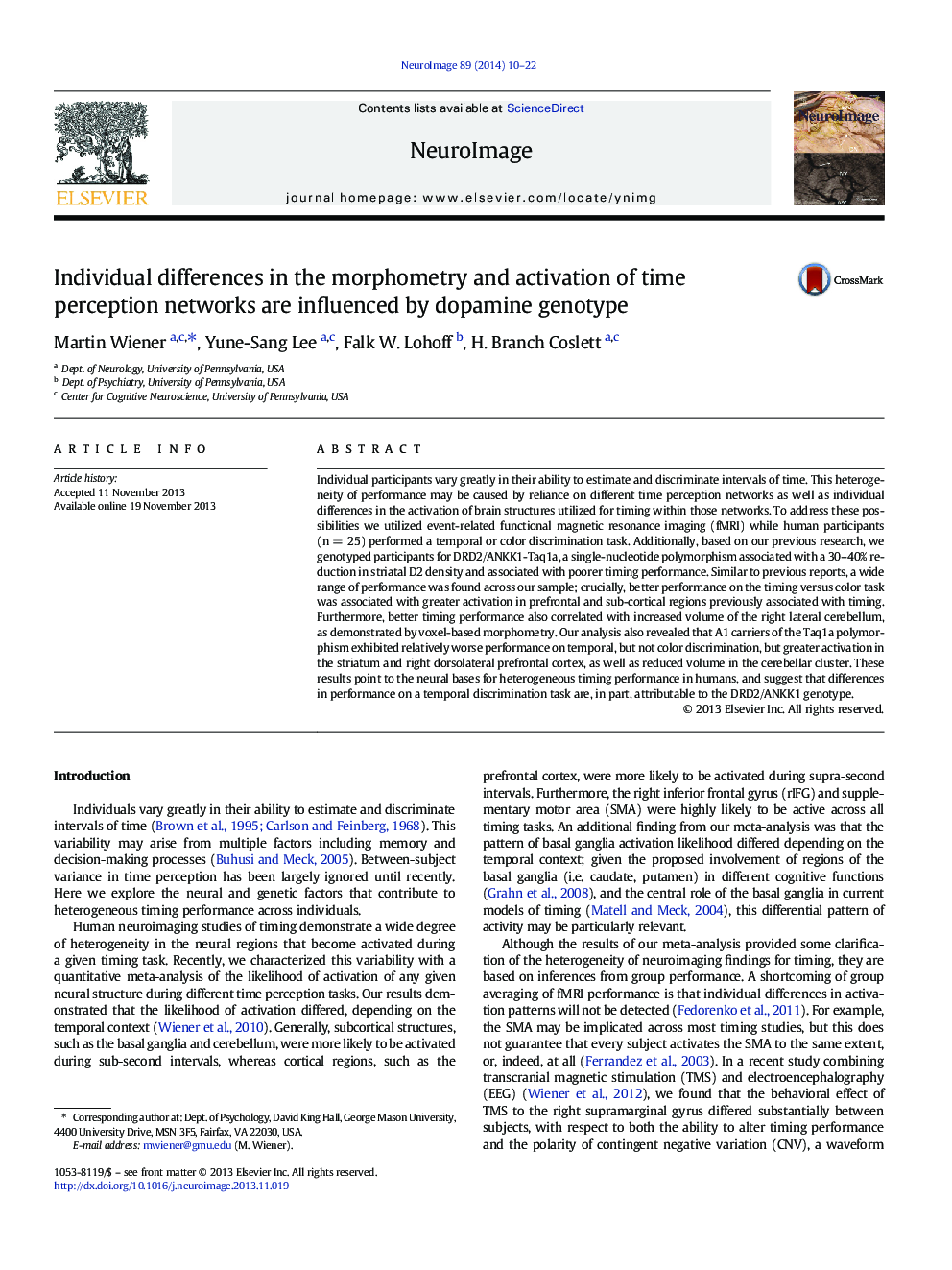| کد مقاله | کد نشریه | سال انتشار | مقاله انگلیسی | نسخه تمام متن |
|---|---|---|---|---|
| 6027977 | 1580916 | 2014 | 13 صفحه PDF | دانلود رایگان |
• We investigated the neural bases of individual differences in time perception.
• Individuals were additionally genotyped for the DRD2/ANKK1-Taq1a polymorphism.
• Activity in the striatum and prefrontal cortex was associated with better performance.
• Greater cerebellar volume was also associated with better performance.
• Differences within these regions were found for Taq1a carriers.
Individual participants vary greatly in their ability to estimate and discriminate intervals of time. This heterogeneity of performance may be caused by reliance on different time perception networks as well as individual differences in the activation of brain structures utilized for timing within those networks. To address these possibilities we utilized event-related functional magnetic resonance imaging (fMRI) while human participants (n = 25) performed a temporal or color discrimination task. Additionally, based on our previous research, we genotyped participants for DRD2/ANKK1-Taq1a, a single-nucleotide polymorphism associated with a 30–40% reduction in striatal D2 density and associated with poorer timing performance. Similar to previous reports, a wide range of performance was found across our sample; crucially, better performance on the timing versus color task was associated with greater activation in prefrontal and sub-cortical regions previously associated with timing. Furthermore, better timing performance also correlated with increased volume of the right lateral cerebellum, as demonstrated by voxel-based morphometry. Our analysis also revealed that A1 carriers of the Taq1a polymorphism exhibited relatively worse performance on temporal, but not color discrimination, but greater activation in the striatum and right dorsolateral prefrontal cortex, as well as reduced volume in the cerebellar cluster. These results point to the neural bases for heterogeneous timing performance in humans, and suggest that differences in performance on a temporal discrimination task are, in part, attributable to the DRD2/ANKK1 genotype.
Journal: NeuroImage - Volume 89, 1 April 2014, Pages 10–22
